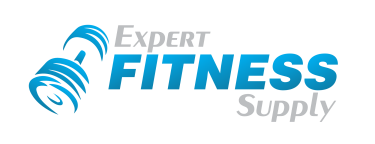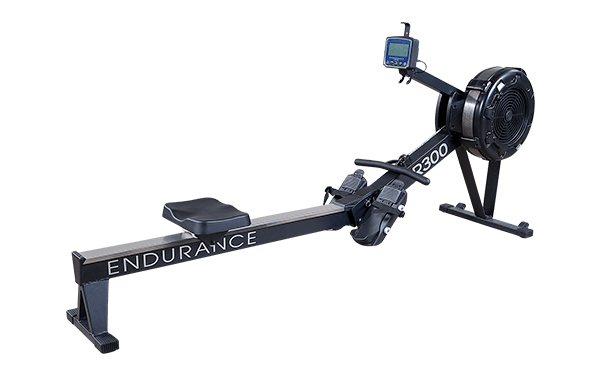- Email us if you have any questions:
- (954) 282-9080
- [email protected]
June Workout of the Month: Rowing

How to Become a Runner
June 2, 2019
The Perfect 30 Minute Summer Workout You Can Do From Home
July 1, 2019Every type of workout and each piece of workout equipment does something different for your body. Weights are for strength training, treadmills, ellipticals and arc trainers are for cardiovascular exercise – but what about rowing machines? Why should rowing be a part of your fitness routine?
The answer is actually quite simple – a rowing machine provides the user with a TOTAL body workout!
Let’s take a look at what exactly this means:
A Total Body Workout With a Rowing Machine
When using a rowing machine both your upper and lower body are required to complete a rowing stroke. Unlike other exercise equipment where you can “cheat” and not utilize your upper body, like on an elliptical, for example, there’s no skipping out on utilizing your arms.
Without engaging your entire body in the workout, you simply cannot use a rowing machine. To perform a rowing stroke you need to push off with your legs and simultaneously use your upper body to pull the handle to your midsection, which requires the use of all muscle groups.
Still not convinced? Here’s a complete list of the muscles required to row:
- Deltoids
- Pecs
- Biceps
- Abs
- Obliques
- Quadriceps
- Upper Back
- Triceps
- Lats
- Glutes
- Hamstrings
- Calves
A Rowing Machine Provides the Ultimate Cardio Workout
In addition to all the muscles you will actively use and work out using a rowing machine, it also provides one of the best cardio workouts you can get. If you’re in the market for a rowing machine, we recommend the First Degree Fitness St John AR Rower.

Since your entire body has to work to perform a rowing stroke it will be easy for you to get your heart rate elevated and maintain it there. This helps to increase cardiovascular performance, and as an added bonus, you’re also able to strengthen your muscles at the same time!
As an added bonus you can even incorporate HIIT (high-intensity interval training) workouts during your workout session.
Proper Form for Using An Exercise Rowing Machine
As with any piece of workout equipment, it’s important to maintain proper form when using the machine in order to get the full benefits of the workout. Here’s how to properly use a rowing machine:
Maintain the Correct Starting Position
When determining proper rowing form you should set the resistance on low until you have perfected your form. Begin by placing your feet on the pads and securing them with the straps tight enough so your feet don’t move or shift while you row. Bring your knees up and slide to the top of the machine and take hold of the handle with an overhand grip.
Pull the handle with you as you slide to the end of the machine. Keep your legs straight, with your knees slightly bent. Lean back slightly and pull your hands towards your chest, keeping the handle right below your chest, with elbows against your sides. This is the position both your starting position and ending position post rowing a stroke.

How to Perfect Your Rowing Movements
When rowing you should move your arms out first, followed by your upper body. Your back should always be straight, your shoulders back, and abs engaged as you follow through the stroke. As your arms extend out, your upper body position should go from slightly angled back to slightly angled forward.
As you extend your arms lean your body forward, slide your body forward on the seat by bending your legs. Once you are at the top of the machine, your arms will be fully extended and legs will be bent. This part of the stroke is called the catch.
Now to move back to the finish position known as the drive. Push off with your feet first, so that your legs straighten. Keep your arms in an extended position with your body still slightly leaning forward. As you continue to push through with your legs, move your upper body so that you begin to lean back. This part of the stroke should mimics pulling the oars out of the water and propelling the boat forward, it is the part that works your leg and core muscles.
The last part of your body to return to finishing position is your arms. As your upper body angles back, pull the handle and bend your arms so that the handle ends up back to touching the front of your chest, just like how you started. Keep in mind that the power should be coming from your legs, not your arms.
Continue practicing your stroke slowly and at low resistance until you get the hang of it then as you feel more confident increase the resistance bit by bit.
Tips for Getting the Most Out of Your Rowing Workout
Now that you know how to row, here are some tips to get the most out of your rowing workout.
Warm Up Properly
Since rowing involves muscle groups in your back, glutes, and hamstrings doing some dynamic stretches before will help your muscles perform better. Some great warmups to do include:
- Leg Wings
- Hip Extensions
- Squats
- Sitting Hamstring Stretches
- Standing Hamstring Stretches
- Tricep Stretches
- Calf Stretches
- Achilles Stretches
Mix Up the Pace
Even though rowing may seem like a simple and straightforward workout, they are actually extremely versatile. You can do a long, 30-minute sweat-inducing workout or a short, sprint interval workout before a HIIT workout. Rowers are also ideal to use as a warm-up or cool-down exercise.
Cool Down Properly
A proper cool down after rowing involves doing the same stretches you did to warm up. While pre-workout stretches should be held for approximately 10 seconds, you will want to hold post-workout stretches for about 30 seconds each.






